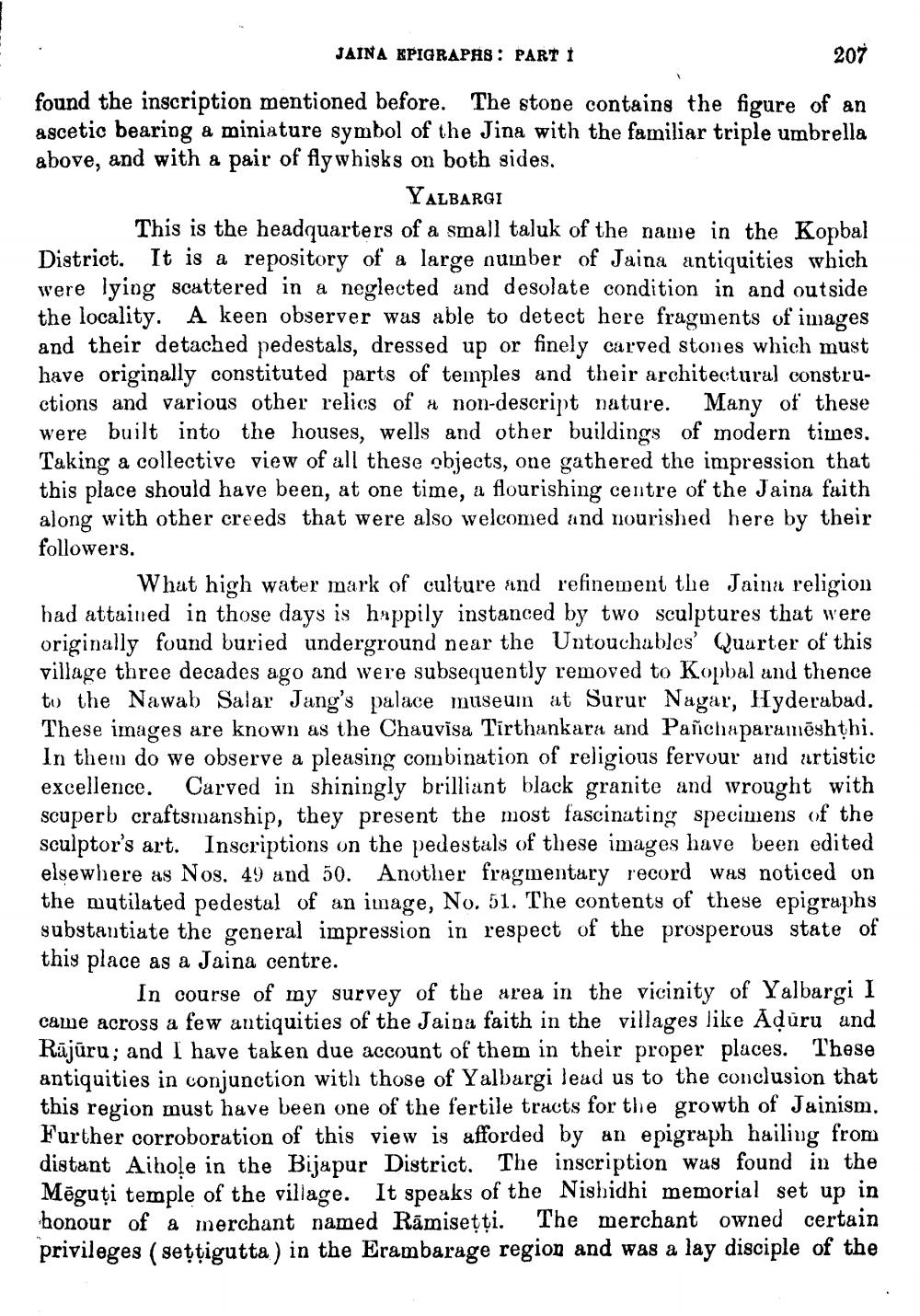________________
JAINA EPIGRAPAS: PART 1
207 found the inscription mentioned before. The stone contains the figure of an ascetic bearing a miniature symbol of the Jina with the familiar triple umbrella above, and with a pair of flywhisks on both sides.
YALBARGI This is the headquarters of a small taluk of the name in the Kopbal District. It is a repository of a large number of Jaina antiquities which were lying scattered in a neglected and desolate condition in and outside the locality. A keen observer was able to detect here fragments of images and their detached pedestals, dressed up or finely carved stones which must have originally constituted parts of temples and their architectural constructions and various other relics of a non-descript nature. Many of these were built into the houses, wells and other buildings of modern times. Taking a collective view of all these objects, one gathered the impression that this place should have been, at one time, a flourishing centre of the Jaina faith along with other creeds that were also welcomed and nourished here by their followers.
What high water mark of culture and refinement the Jaina religion had attained in those days is happily instanced by two sculptures that were originally found buried underground near the Untouchables' Quurter of this village three decades ago and were subsequently removed to Kopbal and thence to the Nawab Salar Jang's palace museum at Surur Nagar, Hyderabad. These images are known as the Chauvisa Tirthankara and Pañchuparamēshthi. In them do we observe a pleasing combination of religious fervour and artistic excellence. Carved in shiningly brilliant black granite and wrought with scuperb craftsmanship, they present the most fascinating specimens of the sculptor's art. Inscriptions on the pedestals of these images have been edited elsewhere as Nos. 49 and 50. Another fragmentary record was noticed on the mutilated pedestal of an image, No. 51. The contents of these epigraphs substantiate the general impression in respect of the prosperous state of this place as a Jaina centre.
In course of my survey of the area in the vicinity of Yalbargi I came across a few antiquities of the Jaina faith in the villages like Adūru and Rājūru; and I have taken due account of them in their proper places. These antiquities in conjunction with those of Yalbargi lead us to the conclusion that this region must have been one of the fertile tracts for the growth of Jainism. Further corroboration of this view is afforded by an epigraph hailing from distant Aihole in the Bijapur District. The inscription was found in the Mēguți temple of the village. It speaks of the Nishidhi memorial set up in honour of a merchant named Rāmisetti. The merchant owned certain privileges (sețţigutta) in the Erambarage region and was a lay disciple of the




